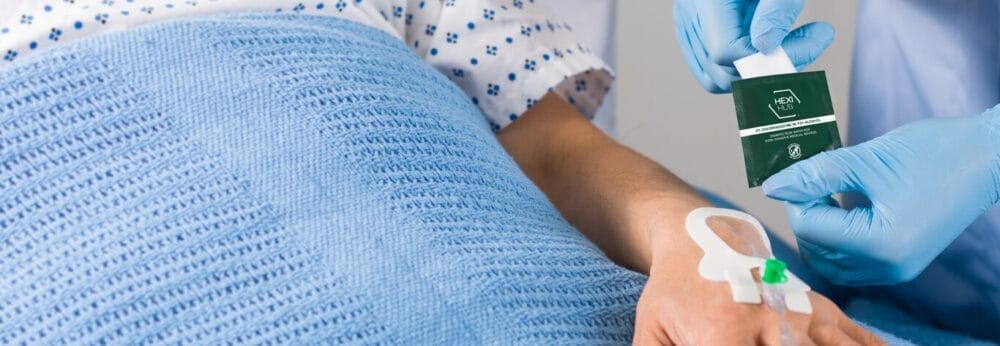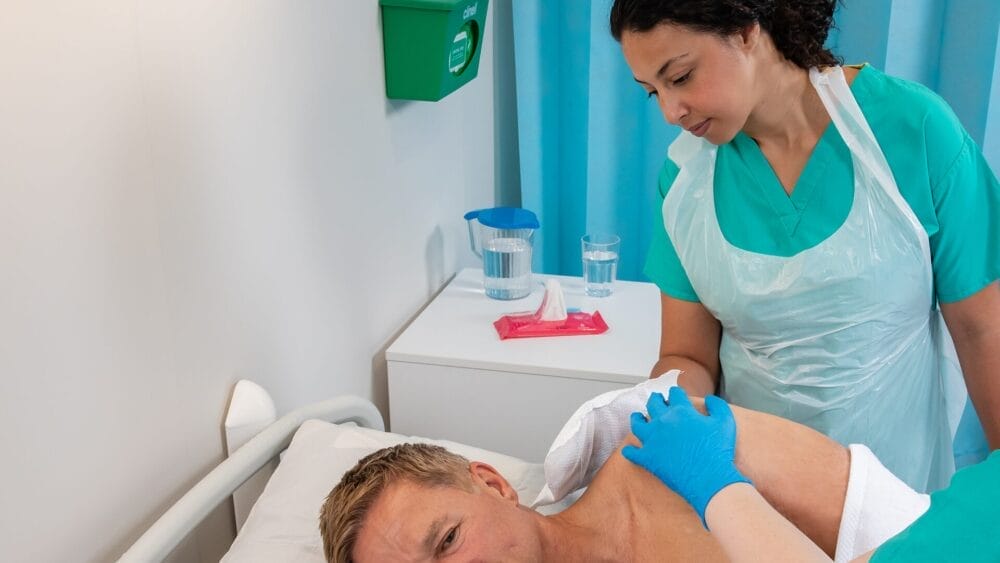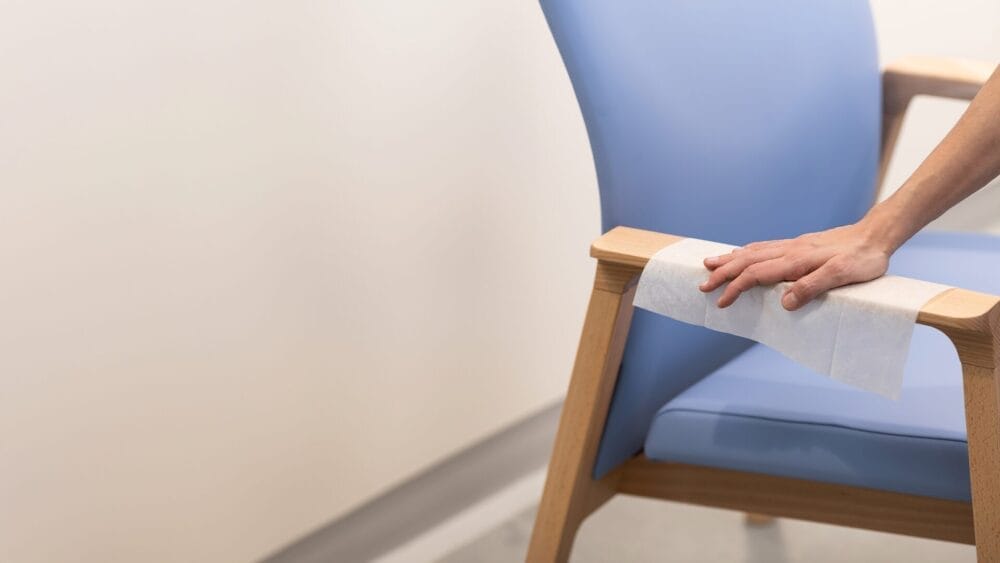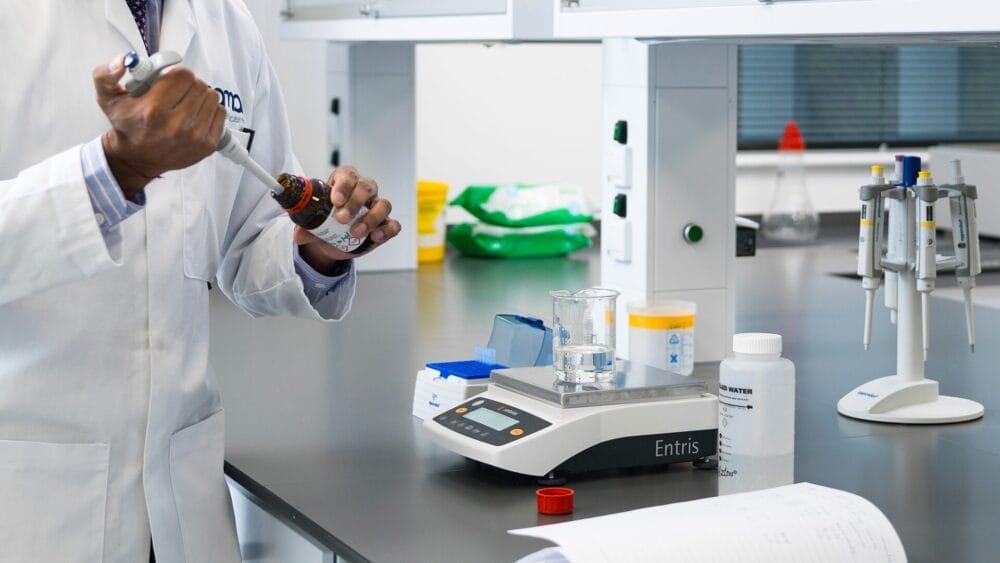Posted
22nd October 2021
Research
In association with the Tissue Viability Society (TVS), GAMA Healthcare recently hosted a webinar on the adoption of waterless bathing practices moderated by Martin Kiernan; Clinical Director, GAMA Healthcare.
Fran Spratt; Lead Nurse Tissue Viability, and Emma Lavelle; Matron from University Hospitals Southampton (UHS) NHS Foundation Trust, openly discussed:
- Their experiences on current bed bathing protocols.
- Why they chose to adopt a new approach to bed bathing.
- Some of the challenges faced by clinicians during the trial and rollout.
- The benefits of rolling out a new waterless bathing system throughout UHS.
- The advantages of waterless bathing during COVID-19.
- The different wipe systems they use.
- How they introduced a moisture damage care pathway using wipes.
- Some real-life patient experiences.
Watch the webinar recording
What is waterless bathing?
It is an alternative to bathing a bed bound person by using without water products, such as wipes or cloths, that have been developed for a full body wash compared to the traditional bed bathing approach of using soap, water, wash cloths and towels.
Why did UHS change from traditional bed bathing?
Their original interest in waterless bathing came from attending a lecture on a study[1] undertaken in nursing homes in the Netherlands which focused on “washing without water” which was considered a more efficient alternative to traditional bed bathing. Their interest in the findings of the study combined with ongoing sinks issues in their hospital and increasing concerns with wash cloths and towels meant that their traditional bathing approach had become challenging, and they were keen to explore an alternative.
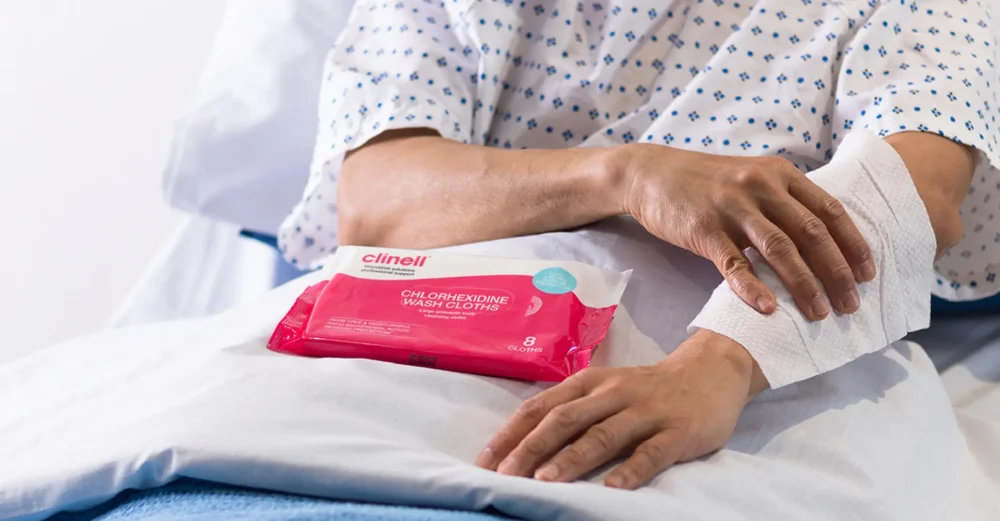
What were the main outcomes of this change in practice?
Benefits were twofold and were for staff and patients. Initially, they undertook a time in motion study comparing traditional bed bathing with waterless bathing in older people wards. The time in motion study found that staff saved 40 minutes whilst delivering care to six patients. In addition, not only had they identified an operational efficiency, but they also found that the waterless bathing experience was preferred by patients and improved practice of staff undertaking whole body bed bathing due to the simple one pack one person format.
What wipes did they implement across the whole Trust?
Bed Bath Wipes, Chlorhexidine Wash Cloths and Contiplan All in One Cleansing Cloths.
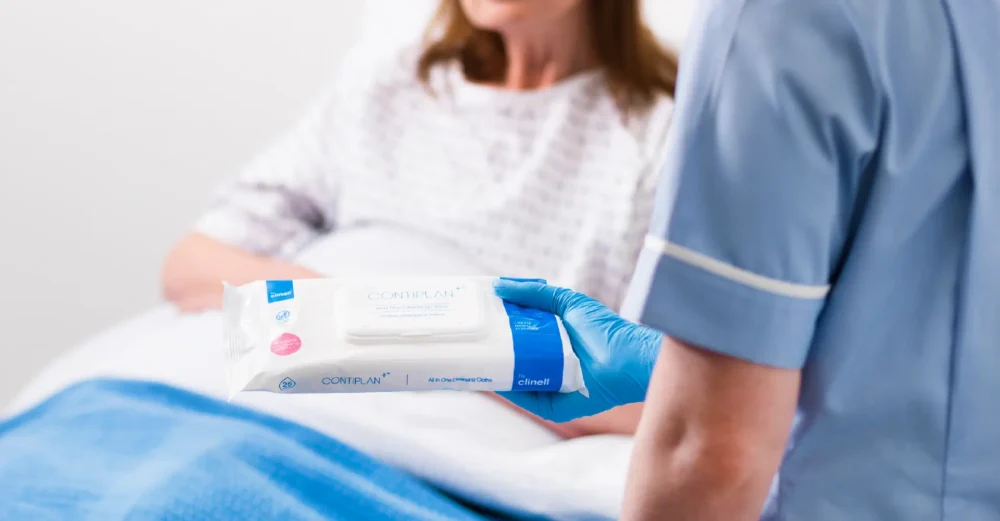
Did they experience any challenges?
Initially they experienced challenges such as negativity that they were introducing a ‘festival wash’ and that they would not be giving patients a proper wash. They overcame this by asking the staff to try the wipes on themselves at the outset before they introduced it to the patients. They also had challenges around the environmental impact but once in use they realised this was offset when compared to laundering of face cloths/towels, disposal of water and use of cleaning products to decontaminate the basins. During the implementation they identified additional benefits such as decreased likelihood of slips, trips and falls, they also found an improvement in skin health (less excoriation in groin and buttock areas) and that staff and patients preferred this new bed bathing approach.
Question & Answer session
The webinarclosed with a question & answer session where the audience asked the experts a variety of questions from how you would introduce waterless bathing to domiciliary, are there any studies regarding use of chlorhexidine wipes and infection rate reduction to has there been any trials on long term use of the wipes on skin integrity.
If you have any further questions after watching the webinar, please get in touch via our Contact Us page. To view products mentioned in this article, please visit our Bed Bath range, Chlorhexidine Bathing range and Contiplan product range. Help spread the word by sharing this article on social media.
1.] Schoonhoven L, van Gaal BG, Teerenstra S, Adang E, van der Vleuten C, van Achterberg T. Cost-consequence analysis of “washing without water” for nursing home residents: a cluster randomized trial. Int J Nurs Stud. 2015 Jan;52(1):112-20. doi:10.1016/j.ijnurstu.2014.08.001.
SHARE THIS ARTICLE
Tags
Latest News
Introducing HEXI HUB: A seamless transition in our product line
We’re pleased to announce an update to our product offering…
Innovative solutions for tackling Carbapenemase-producing Enterobacteriaceae (CPE) at King’s College Hospitals
King’s College Hospital NHS Foundation Trust, one of London’s largest…
Gloves Off: reducing unnecessary plastic waste during environmental cleaning and disinfection
In this blog, Dr Phil Norville discusses the momentum-gaining ‘Gloves…
Gloves Off: Navigating SDS sheets and skin safety claims in environmental decontamination products
In this blog, James Clarke (Head of R&D, Science &…
